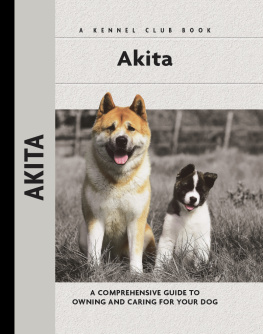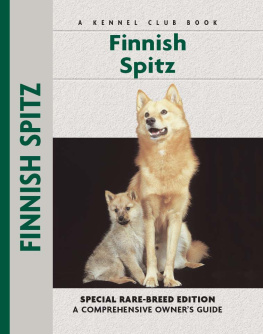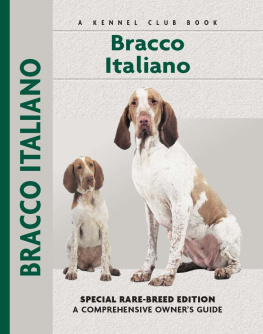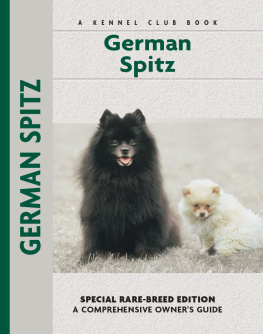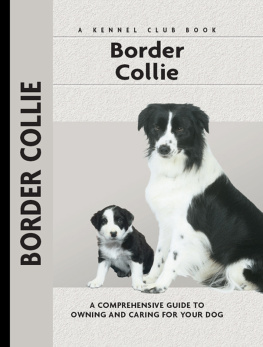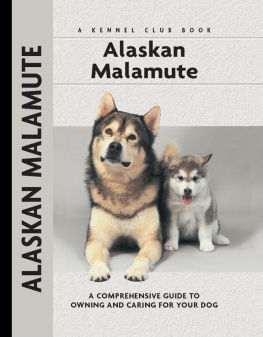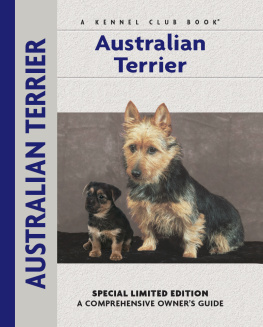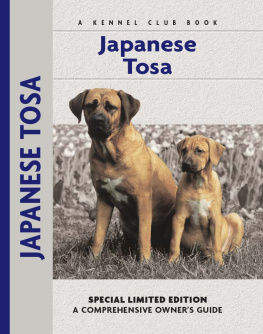Physical Characteristics of the
Akita
(from the the American Kennel Club
breed standard)
Ears: Strongly erect and small in relation to rest of head. Triangular, slightly rounded at tip, wide at base, set wide on head but not too low, and carried slightly forward over eyes in line with back of neck.
Eyes: Dark brown, small, deep-set and triangular in shape. Eye rims black and tight.
Nose: Broad and black. Liver permitted on white Akitas, but black always preferred.

Head: Massive but in balance with body; free of wrinkle when at ease. Skull flat between ears and broad; jaws square and powerful with minimal dewlap.
Muzzle: Broad and full. Distance from nose to stop is to distance from stop to occiput as 2 is to 3.
Stop: Well defined, but not too abrupt. A shallow furrow extends well up forehead.
Forequarters: Shoulders strong and powerful with moderate layback. Forelegs heavy-boned and straight as viewed from front. Angle of pastern 15 degrees forward from vertical.
Color: Any color including white; brindle; or pinto. Colors are brilliant and clear and markings are well balanced, with or without mask or blaze. White Akitas have no mask. Undercoat may be a different color from outer coat.
Neck: Thick and muscular; comparatively short, widening gradually toward shoulders. A pronounced crest blends in with base of skull.
Tail: Large and full, set high and carried over back or against flank in a three-quarter, full, or double curl, always dipping to or below level of back. Root large and strong. Hair coarse, straight and full, with no appearance of a plume.
Body: Longer than high, as 10 is to 9 in males; 11 to 9 in bitches. Chest wide and deep; depth of chest is one-half height of dog at shoulder. Ribs well sprung, brisket well developed. Level back with firmly-muscled loin and moderate tuck-up. Skin pliant but not loose.
Coat: Double-coated. Undercoat thick, soft, dense and shorter than outer coat. Outer coat straight, harsh and standing somewhat off body.
Hindquarters: Width, muscular development and bone comparable to forequarters. Upper thighs well developed. Stifle moderately bent and hocks well let down, turning neither in nor out.
Dewdaws: On front legs generally not removed; dewclaws on hind legs generally removed.
Feet: Cat feet, well knuckled up with thick pads. Feet straight ahead.
Size: Males 26 to 28 inches at the withers; bitches 24 to 26 inches.

Contents

Trace the mystical origins of the ancient wolf-spitz dog that evolved into the Akita of Japan, from its beginning as a hunter of large game, a fighting exhibition and a companion of royalty, to the breeds recognition as a Natural Monument of Japan. Follow the Akita to America, where the breed was established and championed, and from there to the UK.
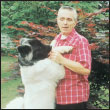
Begin to solve the Akita enigmas concerning the breeds intense personality, protective nature, cleanliness, superior intelligence and trainability. Be regaled by the famous story of the loyal Akita Hachi-Ko, learn about the breeds rapport with children, and find out if the Akita is the right breed for you.
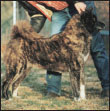
Learn the requirements of a well-bred Akita by studying the description of the breed as set forth in the American Kennel Clubs breed standard. Both show dogs and pets must possess key characteristics as outlined in the breed standard.
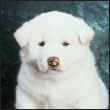
Be advised about choosing a reputable breeder and selecting a healthy, typical puppy. Understand the responsibilities of ownership, including home preparation, acclimatization, the vet and prevention of common puppy problems.
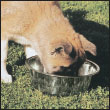
Enter into a sensible discussion of dietary and feeding considerations, exercise, grooming, traveling and identification of your dog. This chapter discusses Akita care for all stages of development.

By Charlotte Schwartz
Be informed about the importance of training your Akita from the basics of house-training and understanding the development of a young dog to executing obedience commands (sit, stay, down, etc.).
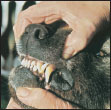
Discover how to select a proper veterinarian and care for your dog at all stages of life. Topics include vaccination scheduling, skin problems, dealing with external and internal parasites and the medical and behavioral conditions common to the breed.
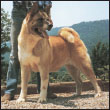
Consider the care of your senior Akita, including the proper diet for a senior. Recognize the signs of an aging dog, both behavioral and medical; implement a senior-care program with your veterinarian.
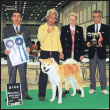
Experience the dog show world, including different types of shows and the making up of a champion. Go beyond the conformation ring to obedience trials and agility trials, etc.
KENNEL CLUB BOOKS AKITA
ISBN 13: 978-1-59378-298-6
eISBN 13: 978-1-59378-966-4
Copyright 1999 Kennel Club Books An Imprint of I-5 Press A Division of I-5 Publishing, LLC
3 Burroughs, Irvine, CA 92618 USA
Cover Design Patented: US 6,435,559 B2 Printed in South Korea
All rights reserved. No part of this book may be reproduced in any form, by photostat, scanner, microfilm, xerography or any other means, or incorporated into any information retrieval system, electronic or mechanical, without the written permission of the copyright owner.
Photographs by Carol Ann Johnson
with additional photos by Norvia Behling, T.J. Calhoun,
Doskocil, Isabelle Franais, Bill Jonas, Mikki Pet Products and Alice van Kempen.
The publisher wishes to thank Bill and B.J. Andrews, Marc Blanc, Steve and Judy Bolding, C.T. & N. Calloway, M. Fisk, Maurizio Moretto, Elaine Nussbaum, Paladin Kennels, Meg Purnell-Carpenter, Donald See, M. White Jr. and the rest of the owners for allowing their dogs to be photographed for this book.
Illustrations by Patricia Peters

Next page
